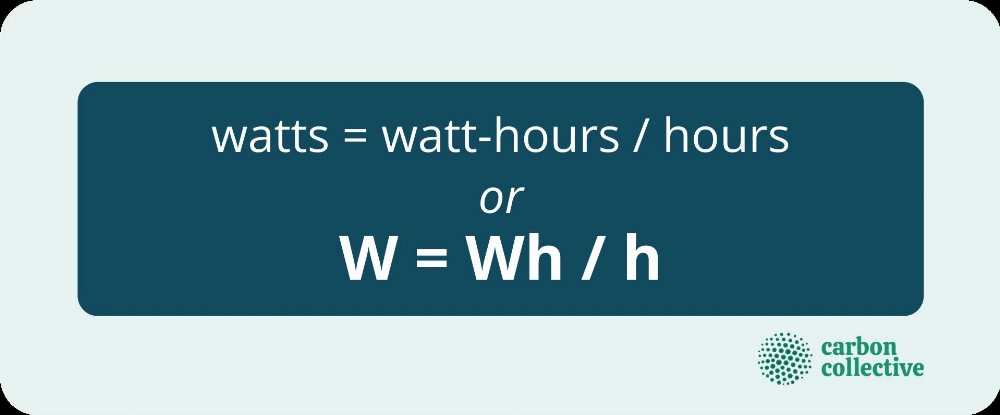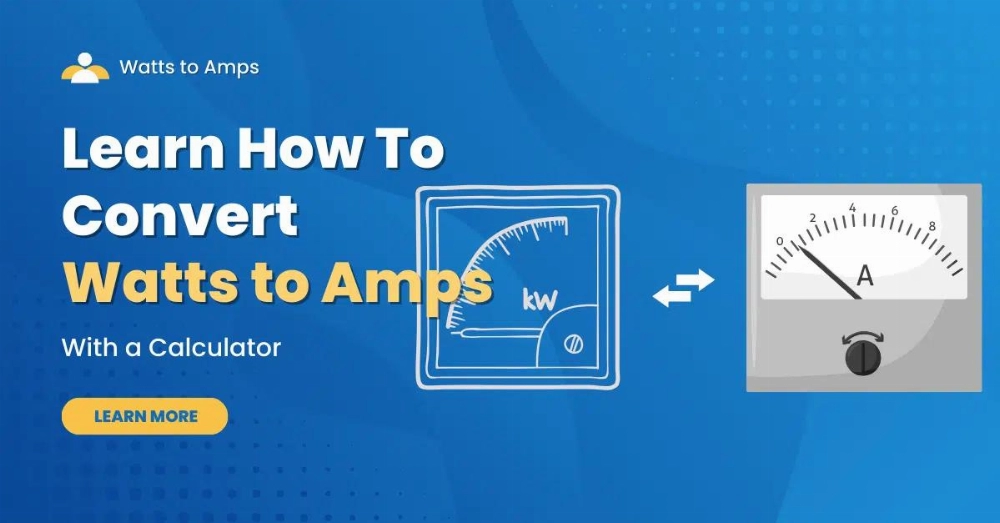Understanding how to convert watts to amps is an essential skill for anyone working with electrical systems. Whether you’re installing new appliances, designing circuits, or simply trying to understand your home’s energy usage, knowing the relationship between the two can help you make informed decisions. This guide will walk you through the basics of watts and amps, the formulas needed for conversion, common mistakes to avoid, and practical applications of these conversions.
Part 1: What are Watts and Amps?
Watts (W) and Amps (A) are fundamental concepts in electricity.
- Watts measure electrical power, representing the rate at which energy is consumed or produced. For example, a 60-watt light bulb consumes 60 watts of power when it’s turned on.
- Amps (A) measure the flow of electric current. Amps can be likened to water flowing through a pipe: the larger the pipe (or the higher the amperage), the more water (or electricity) can flow through it.
Understanding these two units is crucial because they help determine how much power your devices consume and how much current they draw from your electrical system.
Amp Hours vs. Watt Hours: Breaking Down the Difference
Part 2: Why Convert Watts to Amps?
Converting watts to amps is crucial for several reasons:
- Safety: Knowing the amperage a device uses can help prevent overloading circuits, which can lead to dangerous situations like electrical fires.
- Compatibility: Ensuring that the amperage of your devices matches the capacity of your circuits is essential for appliance connectivity. This prevents damage to both the device and the circuit.
- Efficiency: Understanding these conversions can optimize energy usage, leading to lower electricity bills and a reduced carbon footprint.
Part 3: Basic Formula for Watt to Amp Conversion
To convert watts to amps, you can use a simple formula derived from Watt’s Law:
Formula:
I (A) = P (W) / V (V)
Where:
- I = Current in Amps
- P = Power in Watts
- V = Voltage in Volts
According to this formula, current (in amps) is equal to power (in watts) divided by voltage (in volts). Understanding this relationship is essential for knowing how much current your devices will draw from your power supply.
Part 4: Example Calculations for Watt to Amp Conversion
Here are some practical examples to demonstrate how this conversion works:
Example 1: Standard Household Circuit
Suppose you have an appliance that consumes 1200 watts on a 120-volt circuit. To determine how many amps it draws, use the formula:
I = 1200 W / 120 V
This gives you:
I = 10 A
Therefore, the appliance draws 10 amps from the circuit.
Example 2: Higher Voltage System
Consider a device that uses 2400 watts on a 240-volt circuit. The calculation is:
I = 2400 W / 240 V
This gives you:
I = 10 A
In this case, the device also draws 10 amps, demonstrating how voltage influences current draw.
Part 5: Converting Watts to Amps in AC Circuits
When working with alternating current (AC) systems, which are common in homes and businesses, the formula changes slightly due to the power factor (PF). The power factor accounts for energy losses in non-resistive loads like motors or transformers. The formula for AC circuits becomes:
I (A) = P (W) / (V (V) × PF)
For example, if a device has a power factor of 0.8 and uses 1000 watts on a 120-volt circuit, the calculation is:
I = 1000 W / (120 V × 0.8)
This gives you:
I = 10.42 A
Therefore, the device draws approximately 10.42 amps, slightly more than 10 amps, due to the impact of the power factor.
Part 6: Understanding Three-Phase Systems
In the realm of electrical power, understanding three-phase systems is crucial. Three-phase systems consist of three separate AC power circuits, each phase offset by 120 degrees (one-third of a cycle) from the others. This setup allows for more efficient power transmission over long distances and is commonly used in industrial applications.
The formula for converting watts to amps in a three-phase system differs due to its complexity and requires additional calculations. For more information on energy usage, we encourage you to review our article on Watts vs. Watt Hours in Battery Explained.
Watts to Amps in Three-Phase Systems Conversion
When working with three-phase systems, the calculation for converting watts to amps varies slightly depending on the voltage type. For line-to-line voltage, use the following formula:
I (A) = P (W) / (V_L-L (V) × PF × √3)
For line-to-neutral voltage, the formula is:
I (A) = P (W) / (V_L-N (V) × PF × 3)
These formulas account for the more complex nature of three-phase power distribution, which is essential for anyone working with industrial electrical systems.
Common Mistakes When Converting Watts to Amps
While converting watts to amps might seem straightforward, there are common mistakes that can lead to inaccurate results:
- Ignoring Voltage Level: Always confirm whether you are working with AC or DC voltage and ensure you are using the correct voltage value.
- Neglecting Power Factor: In AC systems, ignoring the power factor can lead to significant errors in your calculations.
- Unit Consistency is Crucial: Remember that 1 kilowatt equals 1000 watts. Mixing units can lead to incorrect results.
Practical Applications of Watts to Amps Conversion
Watts to amps conversion has several practical applications, including:
- Electrical Planning: When designing circuits or selecting circuit breakers, knowing the ampacity requirements helps avoid overloads and ensures system safety.
- Appliance Management: Homeowners can better manage their electricity consumption by understanding the current draw of their appliances.
- Renewable Energy Systems: For solar panel installations or battery systems, accurate amperage calculations are essential for optimal performance and safety.
Frequently Asked Questions (FAQ)
How do I determine if my circuit can handle additional devices?
To determine if your circuit can handle additional devices, calculate the total current drawn by all devices and compare it to the circuit’s rating, typically 15 or 20 amps.
What happens if I exceed the amperage rating of a circuit?
Exceeding the amperage rating of a circuit can cause the circuit breaker to trip or the fuse to blow, which are safety mechanisms that protect the circuit.
Can any voltage level be used during calculation?
No! Always use the correct voltage level specific to your application. Using the wrong voltage value will lead to inaccurate current calculations.
What tools do I need to measure watts and amps?
To accurately measure watts and amps in an electrical system, use a multimeter or a clamp meter.
Is it necessary to consider the effect of temperature on amperage?
Yes! High temperatures can increase the resistance in wires, which can affect the current flow. Therefore, it’s important to account for temperature effects during electrical installation planning.
Optimize Performance and Avoid Common Mistakes with This Comprehensive Guide
What is a U1 Battery?
Explore the dimensions, types, and key distinctions of U1 batteries. Learn essential maintenance tips and compare AGM vs. Lithium U1 batteries to choose the best fit for your needs.
SLI Batteries: Types, Uses, and Operation
Understand the fundamentals of SLI batteries, their function, and various types. Learn how SLI batteries differ from AGM, EFB, and deep-cycle batteries, while gaining expert insights on proper maintenance.









